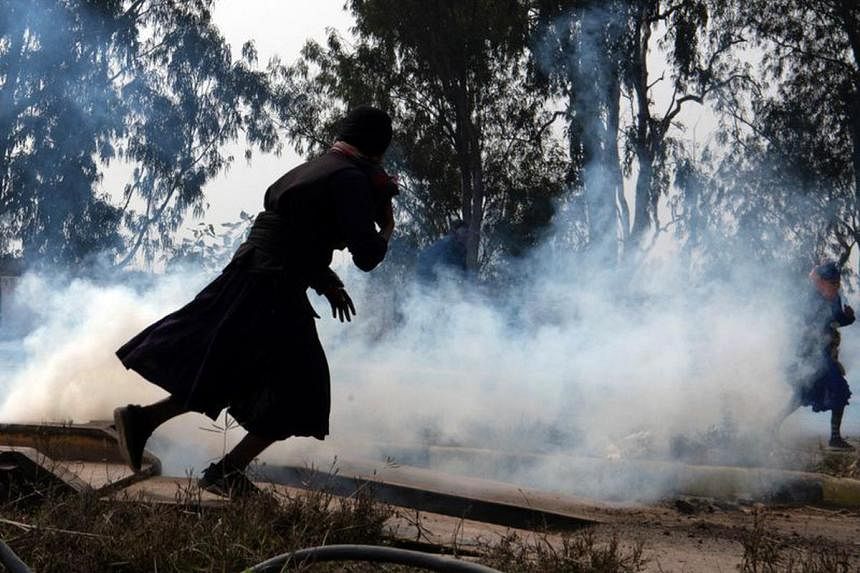

NEW DELHI/MUMBAI -Indian police fired teargas on Tuesday to scatter hundreds of farmers and supporters on a protest march to the capital New Delhi to demand better prices for their produce.
The latest round of farmer protests comes just months before the next general election in which Prime Minister Narendra Modi is expected to win his third term in office.
Still, his government wants to avoid any major confrontation with farmers who may not always vote as one bloc but still enjoy sizeable influence in the countryside where most Indians live.
Modi’s administration also aims to prevent a repeat of a year-long protest in 2020-21 when growers forced the government to repeal laws designed to deregulate vast agricultural markets.
WHY ARE FARMERS PROTESTING?
Farm union leaders are seeking guarantees, backed by law, of more state support or a minimum purchase price for crops.
The government announces support prices for more than 20 crops each year to set a benchmark, but state agencies buy only rice and wheat at the support level, benefiting around just 7% of farmers who raise those crops.
State agencies buy the two staples at government-fixed minimum support prices to build reserves to run the world’s biggest food welfare programme that entitles 800 million Indians to free rice and wheat. This costs the government $24.7 billion annually – its largest outgoing subsidy.
In 2021, when Modi’s administration repealed the farm laws after India’s longest farmers’ protest in years, the government said it would set up a panel of growers and government officials to find ways to ensure support prices for all produce. Farmers accuse the government of going slow in fulfilling that promise.
Farm policy experts argue that buying all farm produce at state-set minimum support prices is economically unviable.
India’s farmer protests coincide with similar demonstrations by their counterparts in Europe, but, other than rising costs of cultivation, the concerns raised by European and Indian farmers are different.
While Europe’s farmers are protesting the European Union’s drive to fight climate change, among other issues, Indian growers are more focused on state-set assured prices for their crops.
DO FARMERS HAVE OTHER DEMANDS?
They also want the government to honour a promise to double their incomes, complaining that costs of cultivation have jumped over the past few years while incomes have stagnated, making farming a loss-making enterprise.
In 2016 Modi’s government pledged to step up investment in rural development, aiming to double farmer incomes by 2022.
Farmers also insist that the government ensure at least 50% profit over their overall cost of production.
They have further asked the government to take action against a federal minister whose son was arrested during the 2021 protest on accusations he ran over and killed four protesting farmers in the Lakhimpur Kheri violence.
HOW LONG CAN FARMERS SUSTAIN PROTESTS AND WHAT CAN THE GOVERNMENT OFFER?
Farmers have time on their side and are in no hurry to head back to the countryside to gather their crops. The new season wheat crop will be ready for harvest only a month from now.
Since 2021, Indian farmers have become adept at reinforcing and maintaining protest tent camps along highways while still bringing their crops to harvest.
To placate protesters, the government might agree to provide them a bonus over and above the minimum support price for 2024. It has fixed this year’s minimum support price for wheat at 2,275 rupees ($27.41) per 100 kg, 7% higher than in 2023. REUTERS
EMEA Tribune is not involved in this news article, it is taken from our partners and or from the News Agencies. Copyright and Credit go to the News Agencies, email [email protected] Follow our WhatsApp verified Channel









